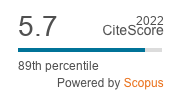Larvae of Tenebrio molitor (yellow mealworm; YM) are an alternative to conventional animal protein as food and feed thanks to their high nutritional value and low environmental impact for production. Since some studies have reported high water activity (aw) with different microbial contamination levels, blanching and drying can be employed to reduce microbial load, enzymatic activity, moisture content, and water activity, ensuring safety and preserving YM for longer periods. This study applied rinsing or blanching followed by vacuum- or multiflash drying, aiming to preserve YM by reducing aw and the microbial load, enabling its use as food and feed. The processing impact on YM colour was evaluated, and they were also subjected to an Escherichia coli contaminated wheat bran to perform a challenge test to evaluate the effectiveness of the decontamination. Drying curves were determined for each situation. Multiflash drying procedure was faster than vacuum drying for reducing YM moisture. Additionally, blanched samples required a shorter period to reach the targeted water activity (0.2-0.3) than rinsed samples. Blanching plus vacuum drying reduced more than 5 log E. coli load in YM in the challenge test. Vacuum drying preserved YM brightness the most. In conclusion, this study showed that drying could provide shelf-stable YM. Besides, only 15 s of blanching before drying gives better brightness and leads to a greater microbial reduction after a relatively short drying time.
RESEARCH ARTICLE
Effects of vacuum and multiflash drying on the microbiota and colour of dried yellow mealworm (Tenebrio molitor)
R.E.Y. Seho Related information
1Department of Chemical and Food Engineering, Federal University of Santa Catarina, EQA/CTC/UFSC, 88040-900 Florianópolis, SC, Brazil.
, R.L. Monteiro Related information1Department of Chemical and Food Engineering, Federal University of Santa Catarina, EQA/CTC/UFSC, 88040-900 Florianópolis, SC, Brazil.
, J. De Dea Lindner Related information2Department of Food Science and Technology, Federal University of Santa Catarina, CAL/CCA/UFSC, 88034-001 Florianópolis, SC, Brazil.
, M. Miotto Related information2Department of Food Science and Technology, Federal University of Santa Catarina, CAL/CCA/UFSC, 88034-001 Florianópolis, SC, Brazil.
, B.A.M. Carciofi Related information1Department of Chemical and Food Engineering, Federal University of Santa Catarina, EQA/CTC/UFSC, 88040-900 Florianópolis, SC, Brazil.
, J.B. Laurindo Related information1Department of Chemical and Food Engineering, Federal University of Santa Catarina, EQA/CTC/UFSC, 88040-900 Florianópolis, SC, Brazil.
*Corresponding author: jb.
*Corresponding author: jb.

Journal of Insects as Food and Feed: 8
(1)- Pages: 23 - 33
Published Online: July 14, 2021
Abstract
2022 Journal Impact Factor
5.7
source: Journal Impact Factor 2023™ from Clarivate™

Institutional Offers
For institutional orders, please contact [email protected].
Purchase Options
-
G. Daş, M.M. Seyedalmoosavi, K. Schleifer, M. Mielenz and C.C. Metges
-
-
M. Barrett, S.Y. Chia, B. Fischer and J.K. Tomberlin
-
D.G.A.B. Oonincx and M.D. Finke
-
M. Reverberi
-
K.B. Barragan-Fonseca, M. Dicke and J.J.A. van Loon
-
A. van Huis
-
M. Tschirner and A. Simon
-
S. Kelemu, S. Niassy, B. Torto, K. Fiaboe, H. Affognon, H. Tonnang, N.K. Maniania and S. Ekesi
-
M.B. Ruby, P. Rozin and C. Chan
Call for papers: Application of insect ingredients in sustainable aquaculture



